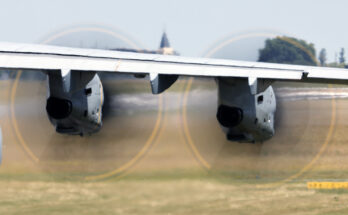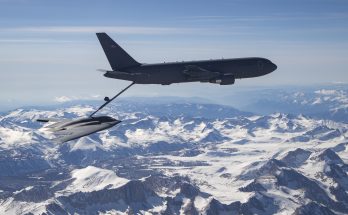
To some observers, what happened on the night of Thursday, May 4, must have been unthinkable. Certainly, in Russia, the metaphoric alarm bells must have been ringing. In Ukraine, where the incident occurred, the country’s war rooms must have erupted in celebrations of joy. For, on that night, in the sky over Ukraine, a state-of-the-art Russian Kh-72 Kinzhal hypersonic missile had been destroyed by a piece of U.S.- made military equipment, equipment whose production began in the 1980s: the Patriot air and missile defense system.
It is believed to be the first known in-flight destruction of a hypersonic missile in a conflict zone setting.
On Saturday, May 6, the news of the hypersonic missile’s neutralization was reported by Lt. Gen. Mykola Oleshchuk, commander of the Ukrainian Air Force, through the Telegram messaging service. In its May 7 coverage of the Russia/Ukraine conflict, CNN, citing an unnamed U.S. official, said that the U.S. had “high confidence” in this claim.
To be fair, the Patriot of today looks and works far differently than the one rolled out all those decades ago. However, the Patriot’s current sensor, the Raytheon Technologies MPQ-65 radar, did not reach Initial Operational Capability (IOC) until 2003, which is a figurative century ago in the rapidly evolving world of defense electronics.
The MPQ-65 has seen several rounds of major improvements since its introduction, now having achieved advancement significant enough to earn the next-generation designation of MPQ-65A, but its foundational technology is now more than 20 years old. Its phased array was designed to operate using traveling wave tubes (TWTs) and is now functioning in an environment where air defense radars overwhelmingly use AESAs and are often equipped with gallium nitride (GaN) semiconductor components.
The MPQ-65 has a range of 150+ kilometers (93.2+ nm), according to a 2015 statement from NATO, although this is almost certainly an underreporting of its true range. Its target, the Kh-72 Kinzhal, has seen wildly varying reports of its top speed: from Mach 4 to a ceiling of Mach 10.
A rough approximation of the speed at which the Patriot would have to move from sensing to destroying its hypersonic Kinzhal target is 109.3 seconds (at Mach 4) to just 43.7 seconds (at Mach 10), given a distance of 150 kilometers for the initial detection. That is well under two minutes from first detecting the missile, to launching a counter missile (not hypersonic), to impact.
The Patriot’s U.S. Foreign Military Sales (FMS) customers must be enthusiastic over the news that the venerable AMD system can take down a hypersonic target. In recent years, several U.S. allies have ordered the Patriot with the MPQ-65A radar, including Bahrain, Poland, Romania, Sweden, and Switzerland. Some may have been wondering if they had ordered soon-to-be-outmoded hardware, since the Patriot’s home market selected a new radar for its own batteries in 2019.
In October 2019, Raytheon Technologies was selected as the winner of the U.S. Army’s Lower Tier Air and Missile Defense Sensor competition, a competition for design and production rights for the Patriot’s next-generation sensor. Raytheon pitched a radar that would provide 360 degrees of coverage and utilize an AESA powered by GaN components. This radar would eventually become the basis for an expanded range of Raytheon radar offerings, known as the GhostEye family.
As of now, a functional GhostEye LTAMDS prototype has been built. A test unit was shipped to the White Sands Test Range in May 2022.
These milestone dates for the LTAMDS are still a long way off, but now, with the MPQ-65A-powered Patriot’s success against the Kh-72 Kinzhal, the U.S. and its allies know that they will not have to wait those three long years to be able to take down a hypersonic missile threat.
Forecast International (FI) provides forecast coverage for the Patriot and its missiles and sensors in its Land & Sea-Based Electronics Forecast, Missile Forecast, and Radar Forecast products. FI’s premium Platinum Forecast System provides subscribers with 10 years of historical and 15 years of future production and funding data, supported by contractor, technical specification, pricing, and program history information. To learn more about FI’s aerospace and defense market intelligence products and what they can do for you, contact a sales representative today.
In his role as a Senior Defense Electronics Analyst at Forecast International, C. Zachary Hofer's studies focus primarily on air, land, and sea radar systems, as well as the airborne electronics segment.



